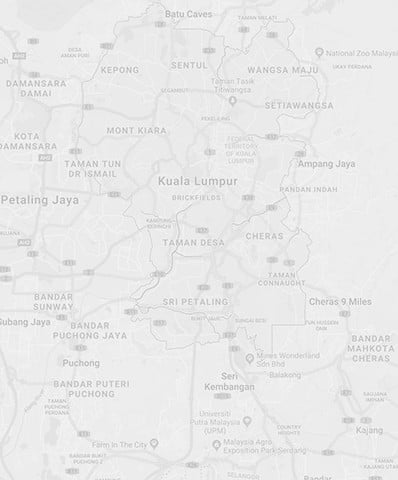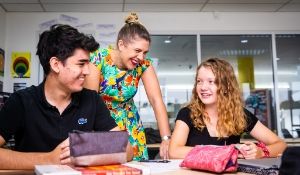Any change in a child’s life can be a source of stress and anxiety, especially when it relates to their education.
At Alice Smith, we do everything we can to limit any strain caused by moving from one key stage to the next, sometimes known as grade placement transitioning. This is particularly important when your child moves from our primary campus to the secondary campus when the move is a significant physical change as well.
“Developing a smooth transition programme reduces anxiety for students and parents. This, in turn, helps ensure students are able to hit the ground running in the new environment, ultimately meaning they are better placed to reach their full potential and thrive,” said Jane Stewart-Williams, Head of KS3 and Associate Vice Principal.
What are the Key Stages?
In the content below, you will not only learn about each Key Stage, you will also learn how we help in promoting a stress-free introduction to the next step of their education.
Click here to learn more about each key stage and what the British school system looks like at Alice Smith.
The Foundation Stage
This stage is divided into two sections, Foundation Stage 1 or Pre-School, and Foundation Stage 2 or Reception, and consists of students aged 3 to 5 years old.
These early years are critical to developing a lifelong love for learning, and by creating a fun, safe and engaging learning environment, our students begin their education with an appropriate foundation.
Transitioning from Foundation to Year 1
In order to help our students transition from their grade placement in the Foundation Stage 2 to Year 1 in Primary, we continue utilising a play-based learning approach, but with increased adult-led activities, guiding student learning and peer interactions.
Our Foundation and Key Stage 1 students also share the same play space, providing familiarity and a sense of comfort, and students in both the Foundation Stage and Key Stage 1 are led around the school by teachers to ensure safety.
Between classroom visits and storytimes led by Year 1 teachers, our students are gently introduced to what school will be like entering the Primary stage and the many friendly faces they will see along the way. Our Foundation teachers also share assessment data with Key Stage 1 teachers so they are knowledgeable when it comes to your children's needs.
Additionally, we provide workshops to give parents the chance to meet their children's teachers. These workshops give parents the opportunity to ask questions and clear up any worries or concerns they may have; as we know the jump from Foundation to Primary is just as important to you as it is for our students.
The Primary Stage
The Primary years consist of two Key Stages for the following groups:
- Key Stage 1, for students in Year 1 and Year 2
- Key Stage 2, for students in Year 3 to Year 6
The moves between these stages are less pronounced with a gradual move from a play-based approach in Key Stage 1 to a cross-curricular project based approach to your children’s learning in Key Stage 2.
As your children progress through the school they will become more exposed to specialist teaching, in Key Stage 1 they continue to receive specialist teaching for MFL (Modern Foreign Languages), PE & sport, swimming and music, and go to add art and computing in Key Stage 2.
Transitioning from Primary to Secondary
This is probably the most significant move for your children as they progress from Key Stage 2 at the end of Year 6, to Key Stage 3, Year 7, moving from the Primary School to the Secondary School.
We feel so strongly about the importance of the transition between these stages that we dedicate a thorough programme that spans all of Year 6 supporting your children to see it as an exciting change.
Our Secondary curriculum opens a number of new learning opportunities for our students, which includes additional languages, creative and expressive arts and new subjects such as design technology (DT). This is why we incorporate numerous Transition Days into our Year 6 curriculum.
These Transition Days help our students familiarise themselves with the campus and introduce them to the curriculum they will experience in Year 7.
We understand the transition from Primary to Secondary can be just as intimidating to parents as it can be for our students, which is why we incorporate parents in the transition as well. Parents are welcomed to meetings after each transition day. They can also take this as an opportunity to meet the key staff their children will interact with at this next stage.
“We look at transition for students and transitions for parents, as well as ensuring a comprehensive dialogue is in place between key teams in each Key Stage,” said Stewart-Williams.
By providing them with the opportunity to experience the subjects they will take on in Secondary, our students are confident and excited for the upcoming change.

The Secondary Stage
The Secondary years consist of two Key Stages for the following groups:
- Key Stage 3, for students in Year 7 to Year 9
- Key Stage 4, for students in Year 10 and Year 11
Key Stage 3 builds your children’s learning ahead of studying their (I)GCSE courses in Key Stage 4. They will study 14 different subjects including English, maths, science and two modern foreign languages. In Year 9 your children will get the opportunity to pick two elective subjects to explore and start to tailor their curriculum to their own interests and aspirations before they start their (I)GCSE courses in Key Stage 4, Years 10 and 11.
In Key Stage 4 your children will study English, mathematics, science and a modern foreign language whilst also specialising in subject areas which reflect their interests, strengths and aspirations. This stage culminates in (I)GCSE examinations.
Transitioning from Secondary to Sixth Form
At this stage, students are familiar with the educational structure and are more than prepared for the challenges of Sixth Form and are ready to transition to studying for A Level examinations.
As our Secondary students move to Sixth Form, we chose to incorporate more independent study spaces to better suit their changing needs. Our goal is to provide students with the tools they need to succeed, and our detailed transition plans encourage excitement and help rid of fear when changes are imminent.
“Many schools have some form of transition programme. We have worked hard to ensure ours is as thorough as possible and offers the best transition experience for all involved,” said Stewart-Williams.
Sixth Form
Sixth Form is the culmination of a student's time in Secondary School, and though it can be academically challenging, the rewards are endless.
At this stage of their educational journey, independent learning and acknowledging their study habits prepares them for life in college or university.
Sixth Form and Beyond
The experience of Sixth Form mimics that of a typical university. By pairing this experience with the rigorous education they have come to expect from Alice Smith, our students not only achieve incredible results on their A Level exams, but they also achieve greatness in their chosen university programmes.
We invite you to learn more about each key stage and what the British school system looks like at Alice Smith by clicking the link below.



